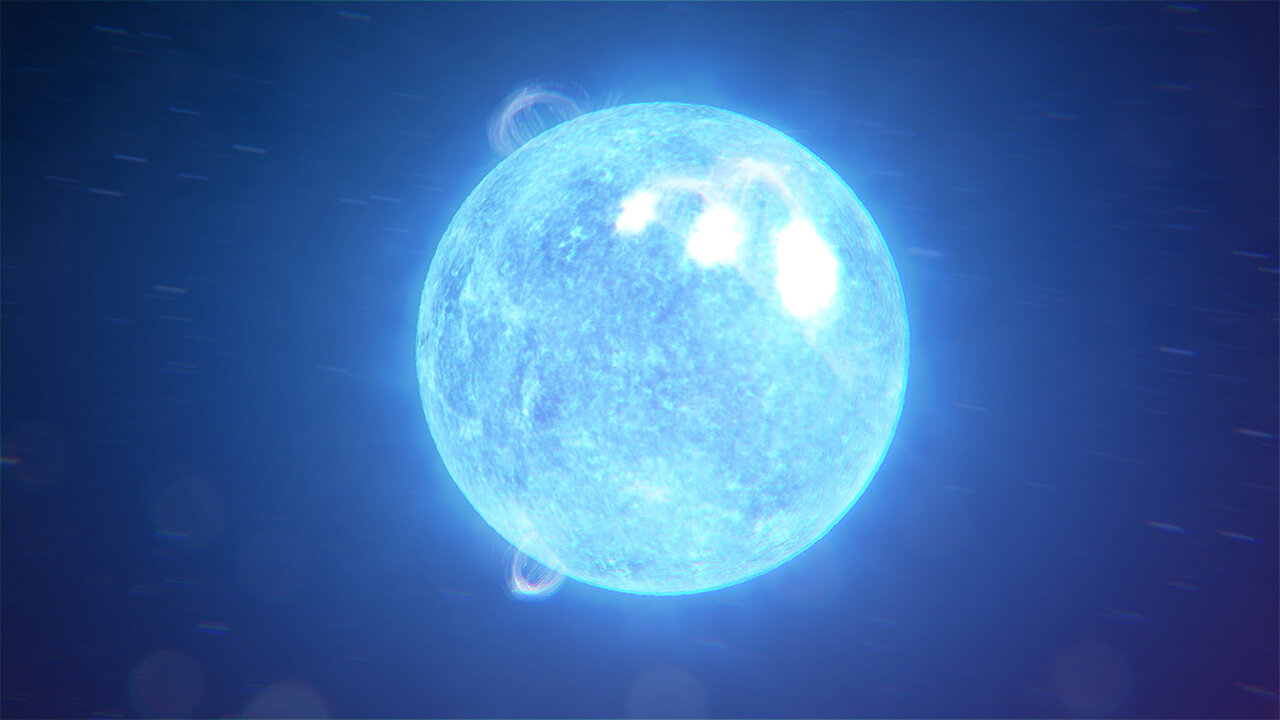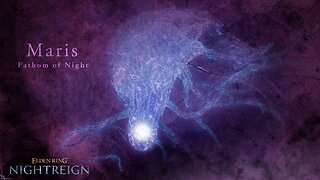Premium Only Content

NASA's NICER Tracks A Magnetar's Hot Spots
NICER tracked how three bright, X-ray-emitting hot spots slowly wandered across the object’s surface while also decreasing in size, providing the best look yet at this phenomenon. The largest spot eventually coalesced with a smaller one, which is something astronomers haven’t seen before
A magnetar is a type of isolated neutron star, the crushed core left behind when a massive star explodes. Compressing more mass than the Sun’s into a ball about 12 miles (20 kilometers) across, a neutron star is made of matter so dense that a teaspoonful would weigh as much as a mountain on Earth.
What sets magnetars apart is that they sport the strongest magnetic fields known, up to 10 trillion times more intense than a refrigerator magnet’s and a thousand times stronger than a typical neutron star’s. The magnetic field represents an enormous storehouse of energy that, when disturbed, can power an outburst of enhanced X-ray activity lasting from months to years.
On Oct. 10, 2020, NASA’s Neil Gehrels Swift Observatory discovered just such an outburst from a new magnetar, called SGR 1830-0645 (SGR 1830 for short). It’s located in the constellation Scutum, and while its distance is not precisely known, astronomers estimate that the object lies about 13,000 light-years away. Swift turned its X-Ray Telescope to the source, detecting repeated pulses that revealed the object was rotating every 10.4 seconds.
NICER measurements from the same day show that the X-ray emission exhibited three close peaks with every rotation. They were caused when three individual surface regions much hotter than their surroundings spun into and out of our view.
NICER observed SGR 1830 almost daily from its discovery to Nov. 17, after which the Sun was too close to the field of view for safe observation. Over this period, the emission peaks gradually shifted, occurring at slightly different times in the magnetar’s rotation. The results favor a model where the spots form and move as a result of crustal motion, in much the same way as the motion of tectonic plates on Earth drives seismic activity.
The team thinks these observations reveal a single active region where the crust has become partially molten, slowly deforming under magnetic stress. The three moving hot spots likely represent locations where coronal loops – similar to the bright, glowing arcs of plasma seen on the Sun – connect to the surface. The interplay between the loops and crustal motion drives the drifting and merging behavior.
-
 LIVE
LIVE
Misfit Electronic Gaming
6 hours ago $0.09 earned"LIVE" "Blind Descent' +"Dollhouse of Dead" Playtest 10 Followers till we hit 1000! We CAN do this!
124 watching -
 21:53
21:53
Glenn Greenwald
6 hours agoMichael Tracey on the Street: What Do People Think of the Epstein Case?
98.1K52 -
 2:26:28
2:26:28
megimu32
3 hours agoOTS: Board Games Gone Wild! The Loud, Weird & Chaotic Games That Raised Us
4.84K6 -
 LIVE
LIVE
DamnDanieI
3 hours agoKill First, Loot Later – OTG Live
299 watching -
 56:41
56:41
Donald Trump Jr.
7 hours agoLies, Leaks, and Lawfare: Censorship Corruption Exposed | TRIGGERED Ep.263
126K117 -
 1:19:46
1:19:46
Precision Rifle Network
4 hours agoS4E25 Guns & Grub - Rex Is Back, I shot the 6.5PRC finally...
4.47K1 -
 LIVE
LIVE
rhywyn
2 hours agoうつ
31 watching -
 LIVE
LIVE
RyuMuramasa✧
4 hours agoNEW Everdark Sovereign | Elden Ring Nightreign | LIVE Playthrough
34 watching -
 1:17:04
1:17:04
Nikko Ortiz
11 hours agoLive - News, Politics, Podcast And Naaah Im Playin We Chillen
3.3K -
 1:26:13
1:26:13
Mally_Mouse
6 hours agoLet's Hang!! -- P.O. Box & Chill!
16.2K